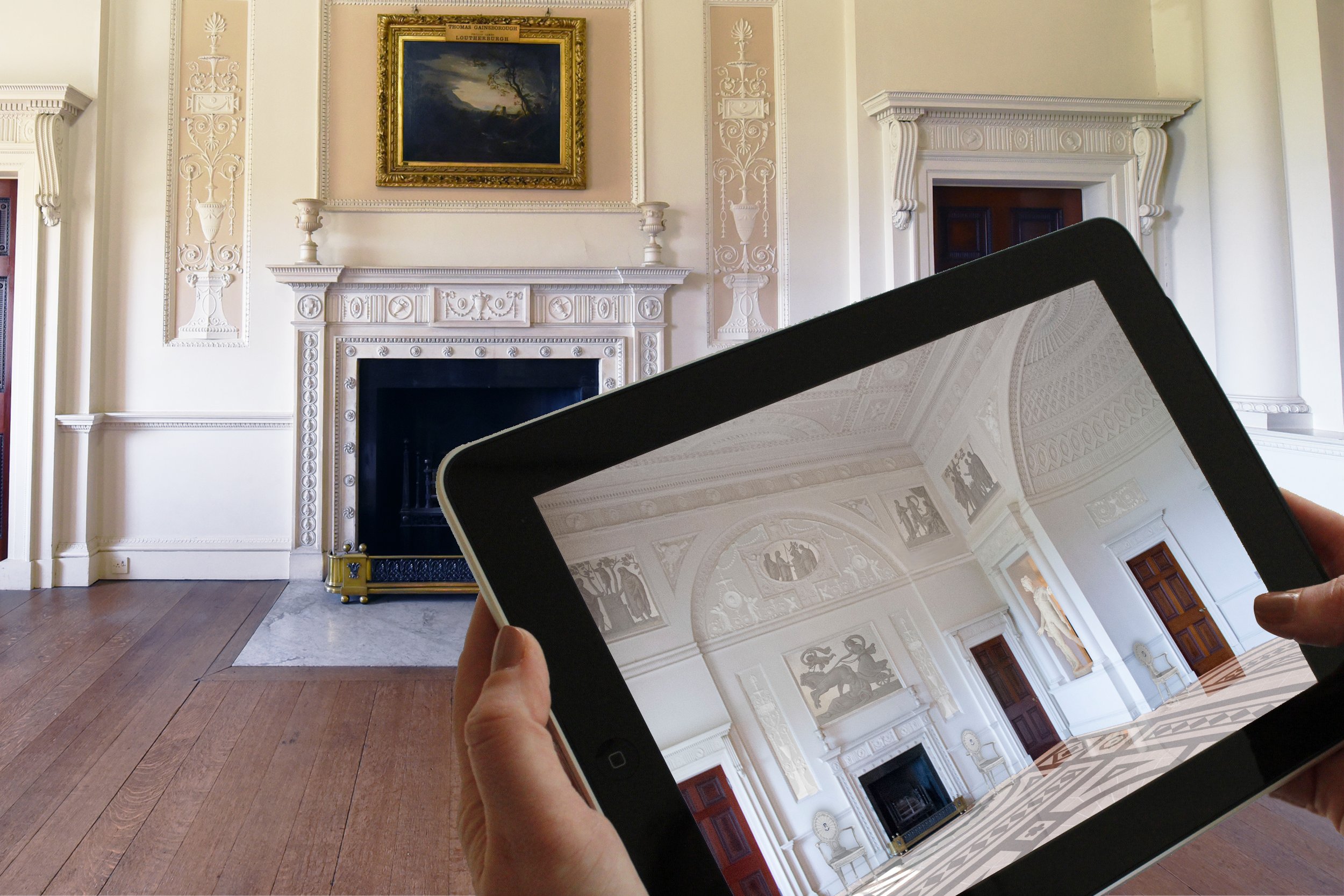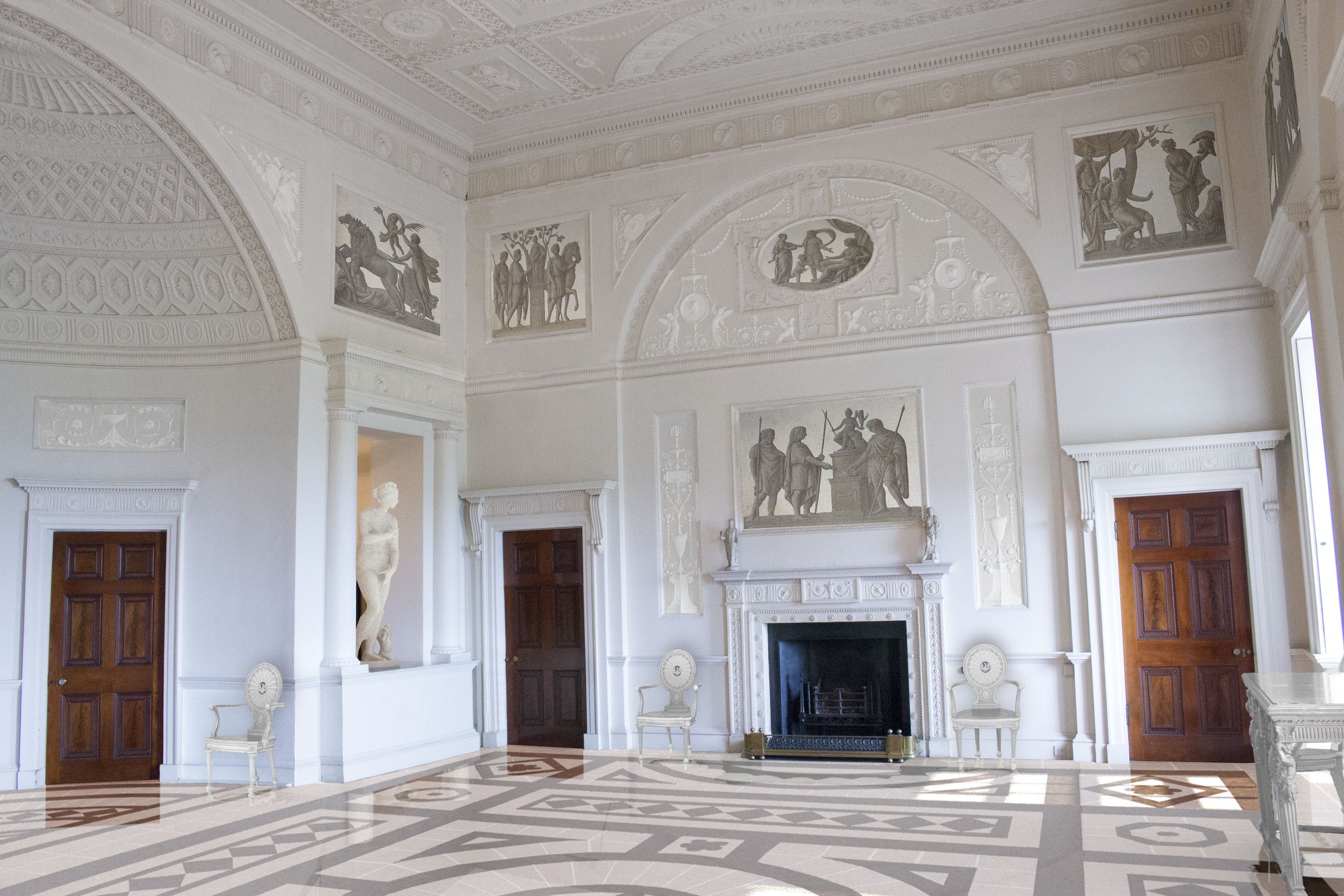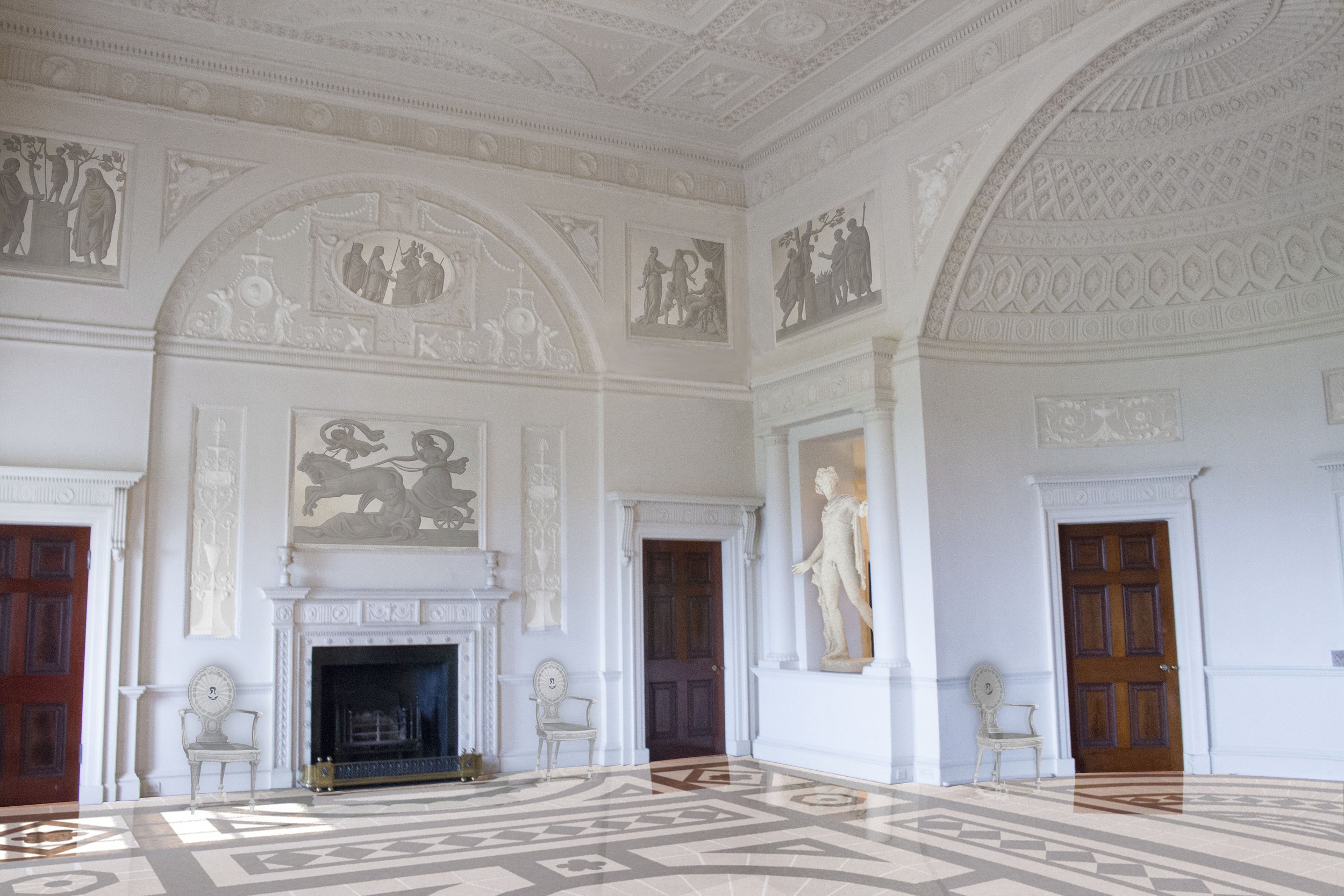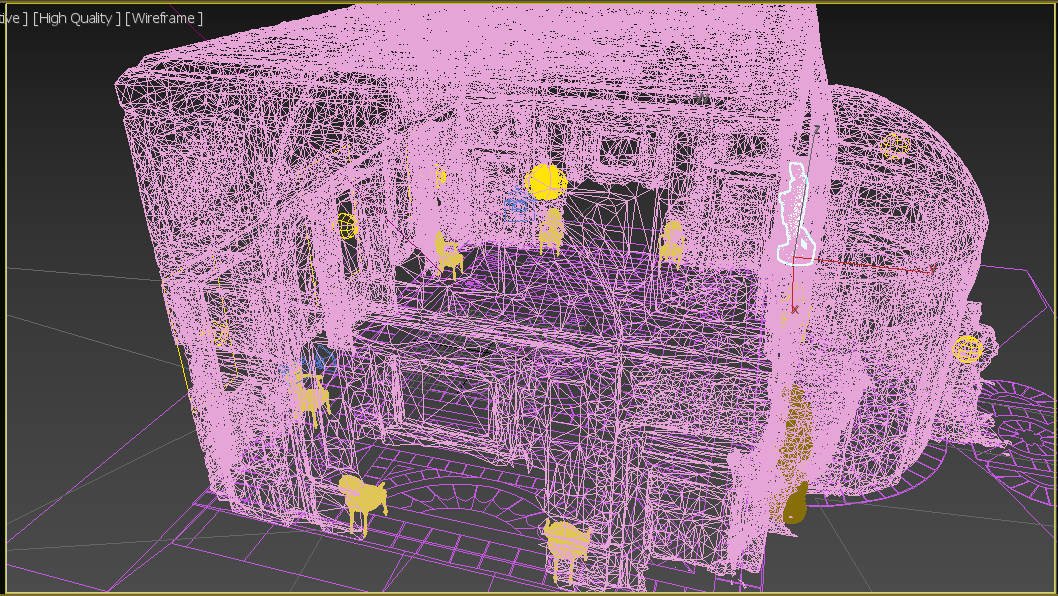
Nostell Priory Top Hall 2D Render
Client:
National Trust, Nostell Priory
Industry:
Heritage
Final Product:
2D Digital Renderings for iPad
Techniques:
Building, Internal Photography
Object Photography
Post Processing and cleaning
Vray Rendering
Photoshop
Date & Duration:
2019, 2 weeks
Objective
The curator at Nostell Priory sought a way to show visitors an alternative reality that nearly came to pass for the Top Hall of the grand house. Owner Rowland Winn hired architect Robert Adam to create a Neo-Classic design for the space. However, Winn died before it was completed, and the work was never completed.
An altered 2D image was requested to illustrate how different the hall would have looked if everything had gone to plan. However, it was determined that simple Photoshop wouldn’t be enough. Photogrammetry would be used to help recreate parts of the space in unique ways.
Approach
Object photogrammetry was carried out on a Chippendale chair so it could be recoloured and placed around the room at different angles from different perspectives.
Room photogrammetry was undertaken to help replace the wooden floor with a reflective marble patterned one. With a model of the room, accurate reflections and shadows could be added for a much more realistic look.
After photography was concluded, the images were processed in Agisoft PhotoScan (now MetaShape) to create the needed models. The originally intended marble pattern was recreated and added to the space and accurate lighting was added to the scene. Vray rendering in AutoDesk 3DS Max allowed for realistic images of the floor with reflections to be created and merged into the Photoshop file. 3D statues were also added into the model and rendered to include accurate shadowing.
Objects with thinner features such as chair legs and arms can be quite challenging to capture. Reflective surfaces, like polished wood, can also prove quite difficult for photogrammetry. Therefore, the chair models took a lot of post-production work to fit into the scene. ]
For all other desired effects, Photoshop was used to transform the original images of the room into a look at what might have been.
Outcome
The end results were two 2D images, from different perspectives of the room, showing how differently the room would have looked with its final Neo-Classical styling. These images were then to be shown to visitors in the room via an iPad but were also later added to a physical sign presented in the room.
Innovation
It’s likely this kind of undertaking would often rely entirely on Photoshop. However, it was really useful to create realistic reflections and shadows using the photogrammetry model of the space. The combination of 2D and 3D skills in this project really paid off.
If you have a similar project you’d like to work on, get in touch. We’d love to chat!

Angle 1, before

Angle 2, after

Angle 2, Before

Angle 2, After

Wireframe in 3DS Max

Using the 3D model to cast appropriate shadow and light

Display within the hall
